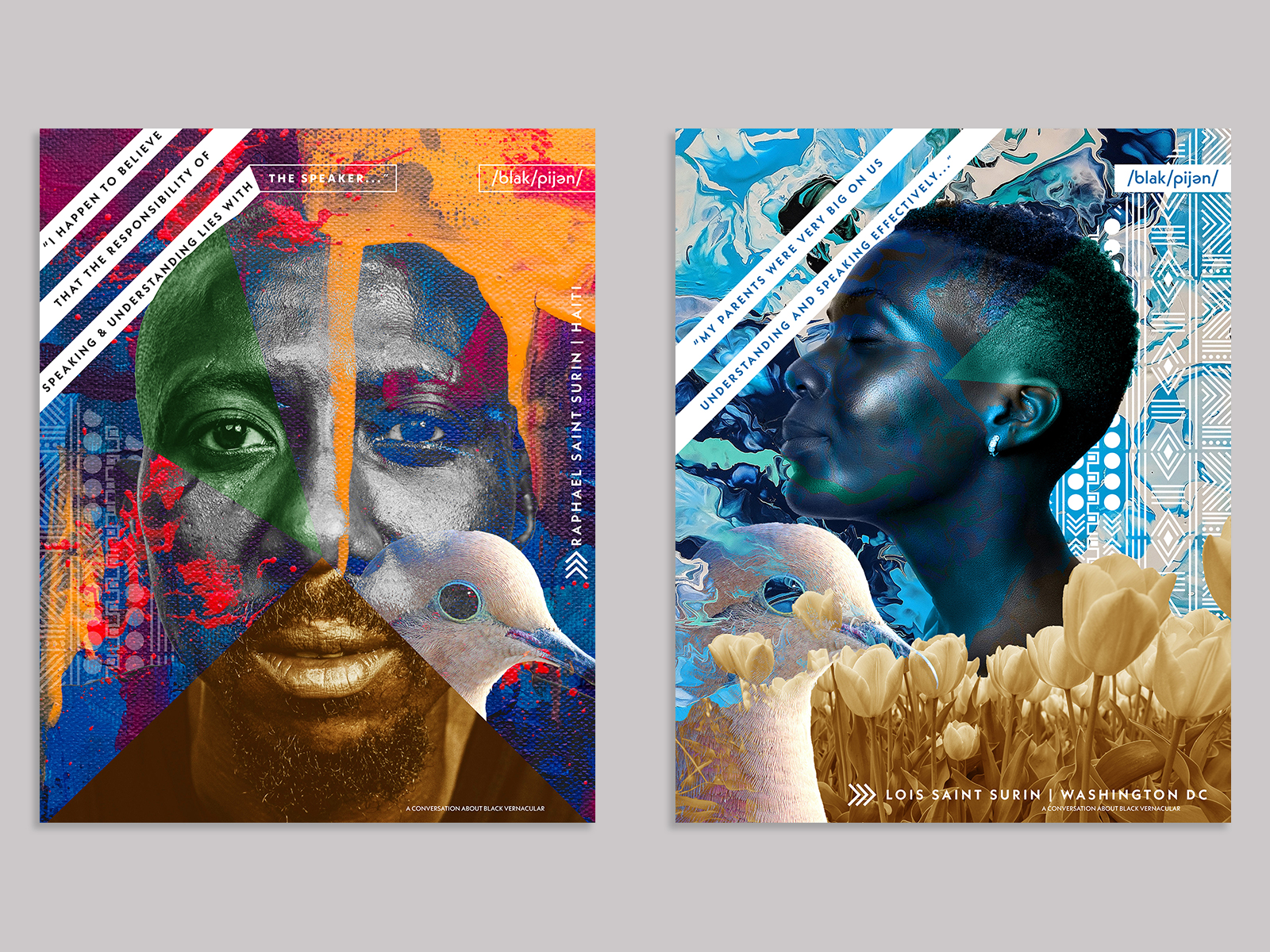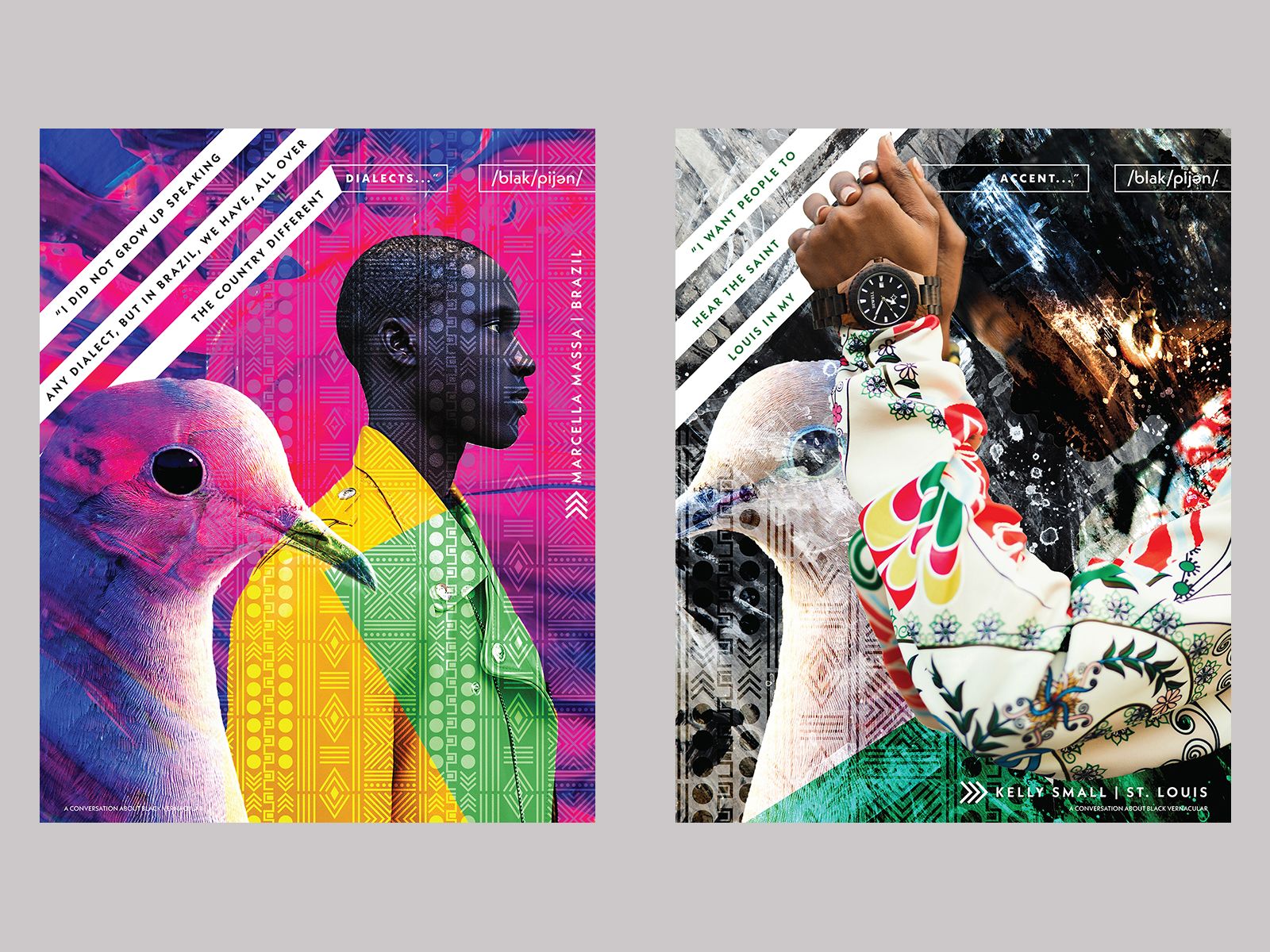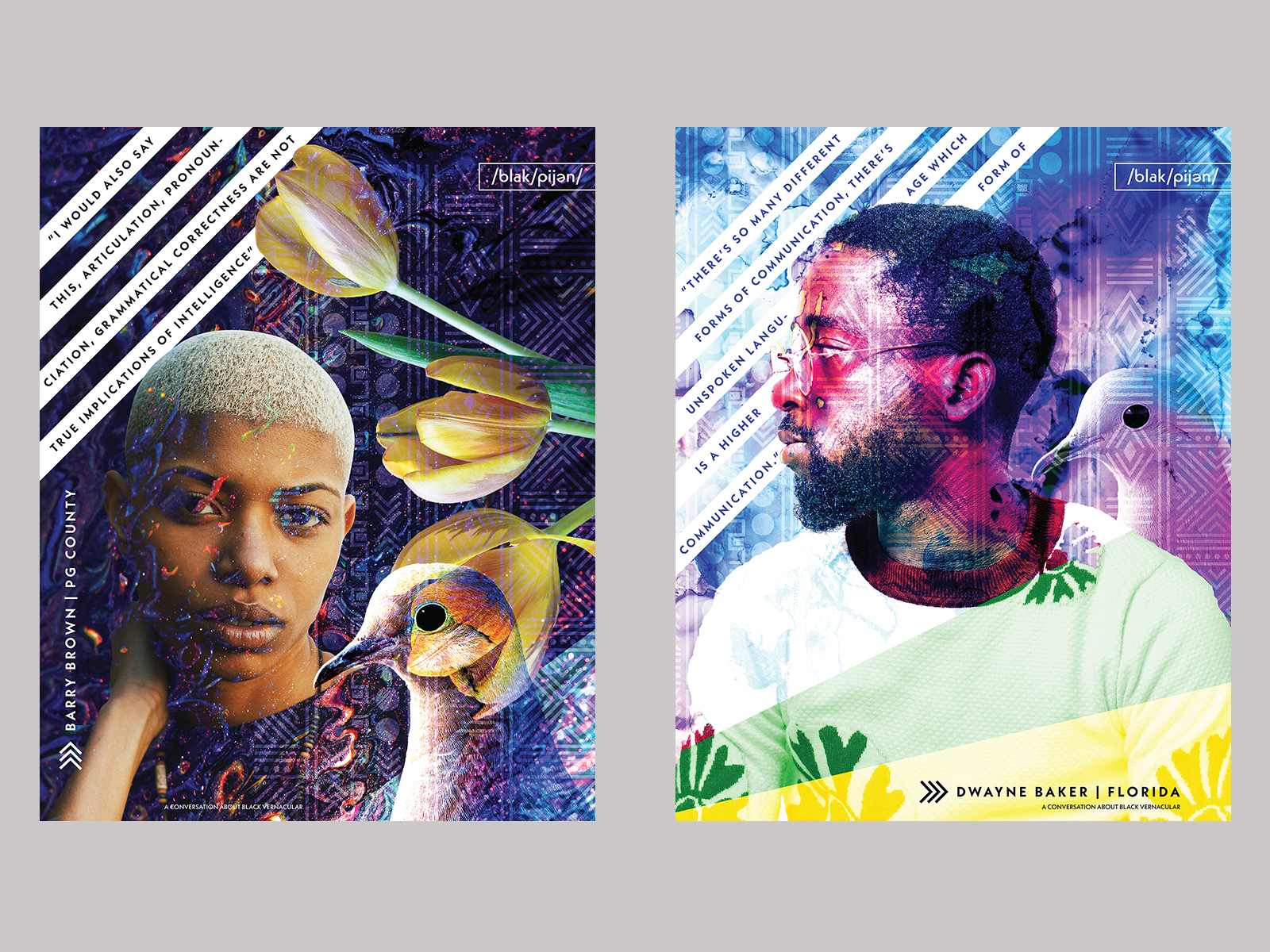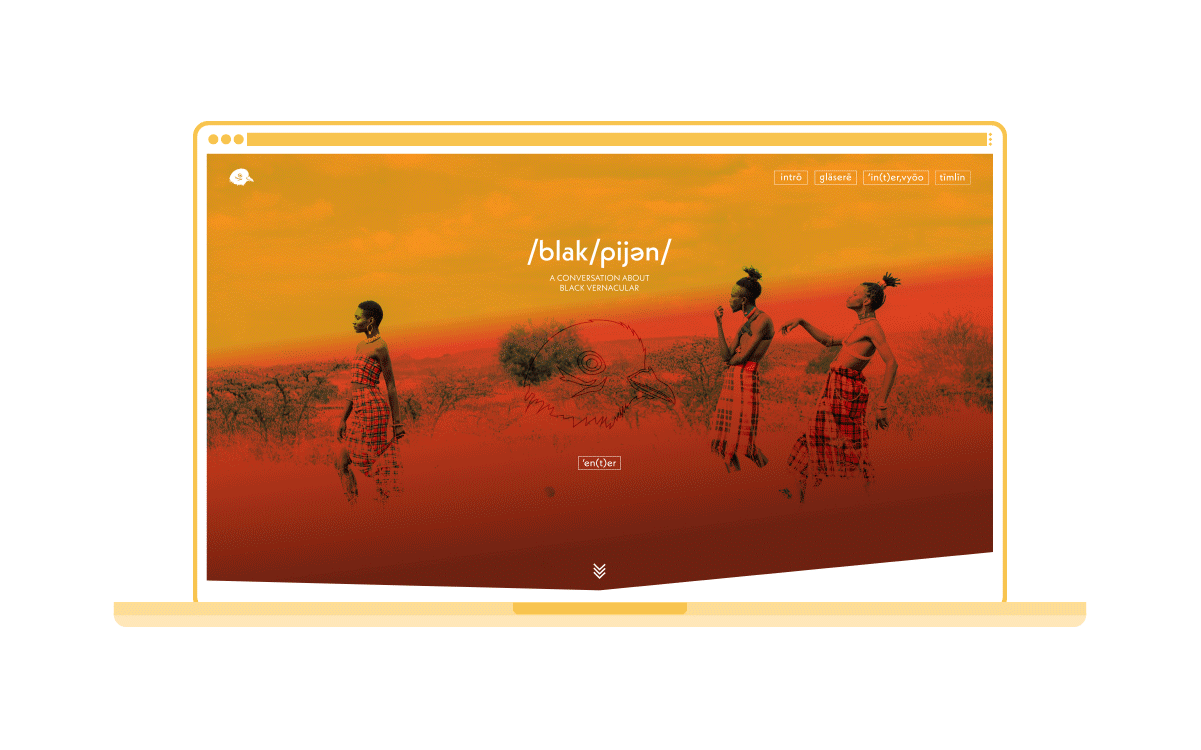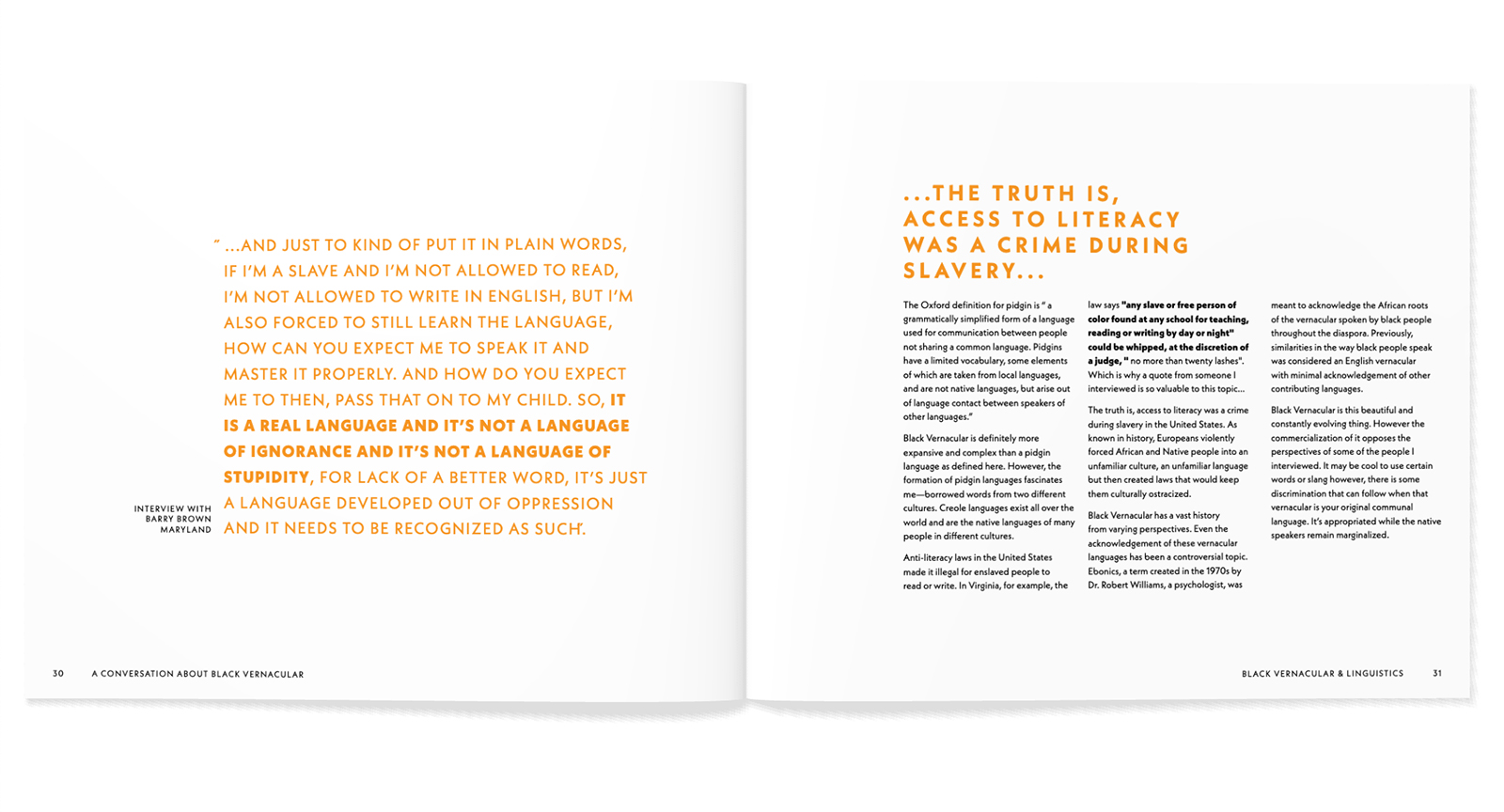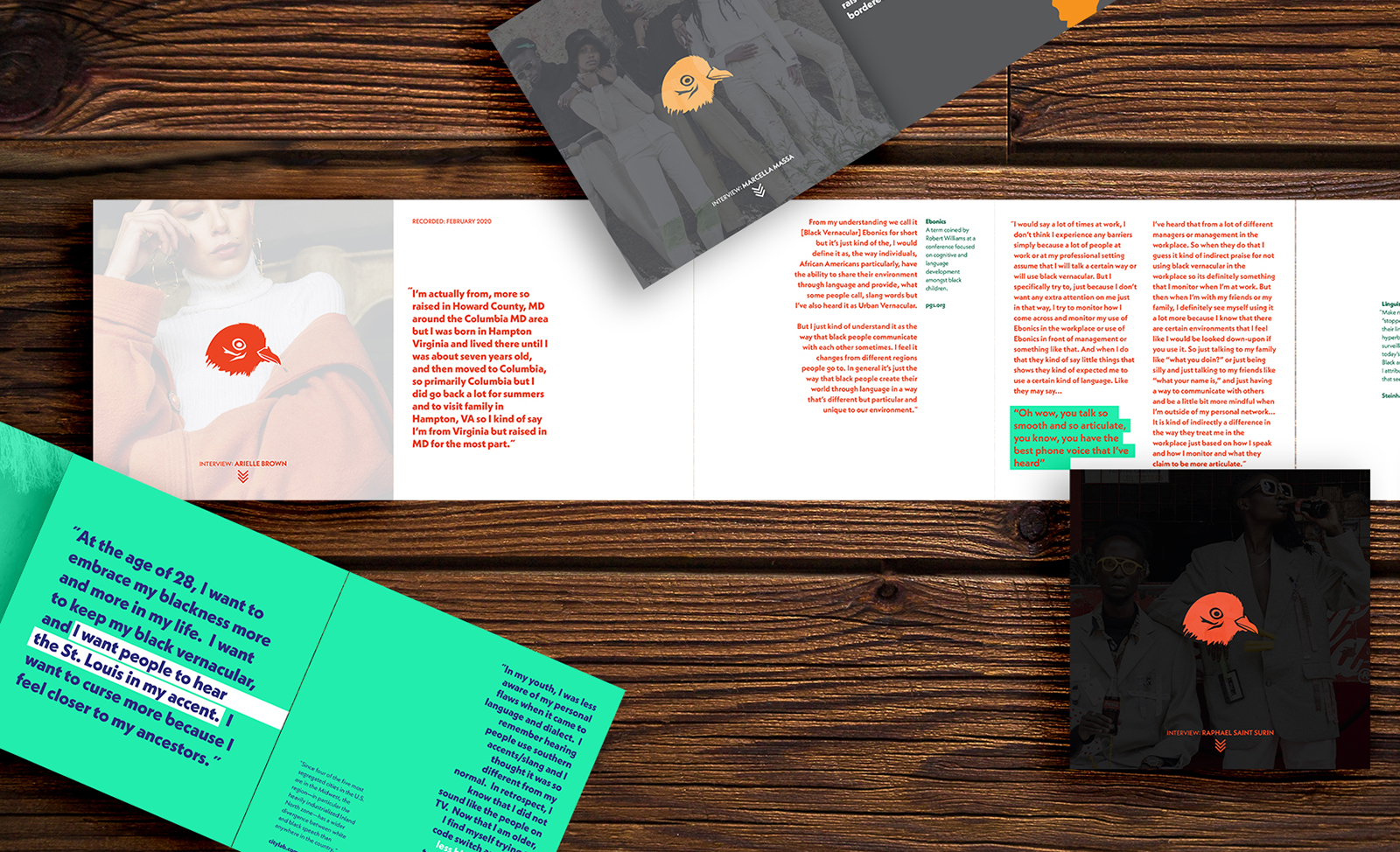Abstract
The black vernacular project, titled /blak/pijen/ for the phonetic spelling of Black Pidgin, explores the transformation of language in black communities connected to the black diaspora. Pidgin and Creole languages oftentimes stem from the creative manipulation of language amongst people. Initially rooted in mother tongues and revolutionized with lingua francas and modern day colloquialism, Creole languages have various complexities that make them community and culturally specific. Rather than diving into the complexities of linguistics, /blak/pijen/ is a collection of perspectives and interviews. “Is there a specific language that you speak when you’re with family and friends? Do you feel that your specific vernacular is valued in Western society?” Learning the perspective of the people interviewed provides an indirect view of linguistic insecurity, linguistic conformity and the prejudices associated with effective communication. Most importantly, the conversations reveal linguistic creativity, the beauty of communal conversation and dialect and the importance of it among native speakers.
The audio is the most important piece of the project because it shows various perspectives on what personal speech means to each person. Displaying audio graphically, was initially a challenge because the visual language was not meant to outweigh the auditory language. Therefore, the hope was to use sound domes as part of the exhibition so viewers can connect with the audio with or without visual representations. Connected to each interview, there is a individually designed transcript, highlighting important parts from each person’s interview and connecting it to some of the research underway. Bògòlanfini, or mud cloth, is the inspiration behind the hints of pattern expressed throughout the transcripts. Mud Cloth is a pattern that stems from Malian culture to highlight some form of African heritage related to the topic. The colors used for each transcript book became a parallel representation of the interviewee, anywhere that person is quoted, they are represented in that same color scheme which extends to the website and, subtly, to the posters.
